Swipe to view slides
-

-
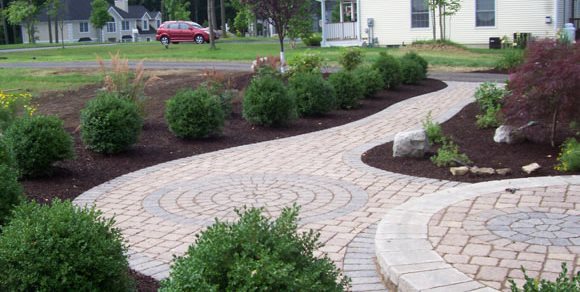
Lehigh Lawn & Landscaping in Poughkeepsie, NY
-
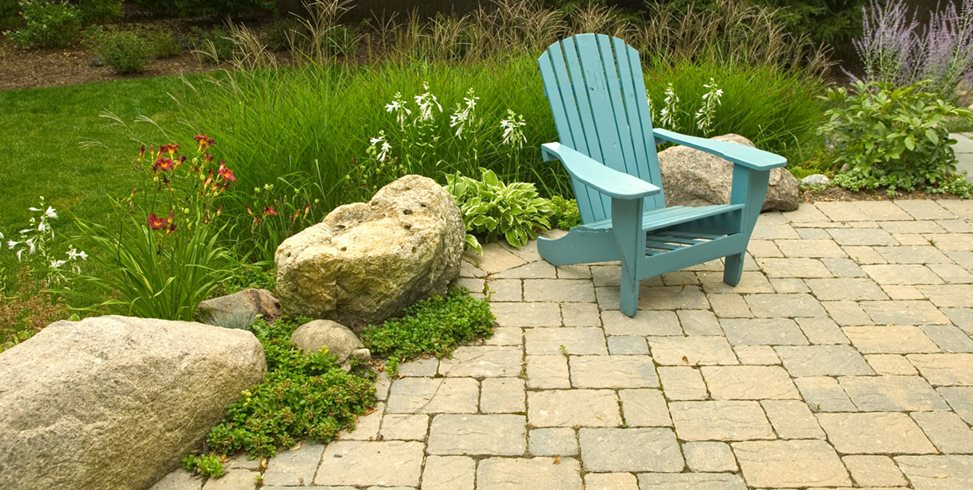
Romani Landscape Architecture in Glencoe, IL
-
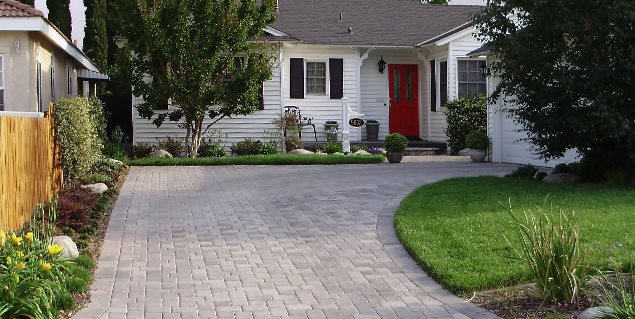
Genesis Stoneworks in Moorpark, CA
-
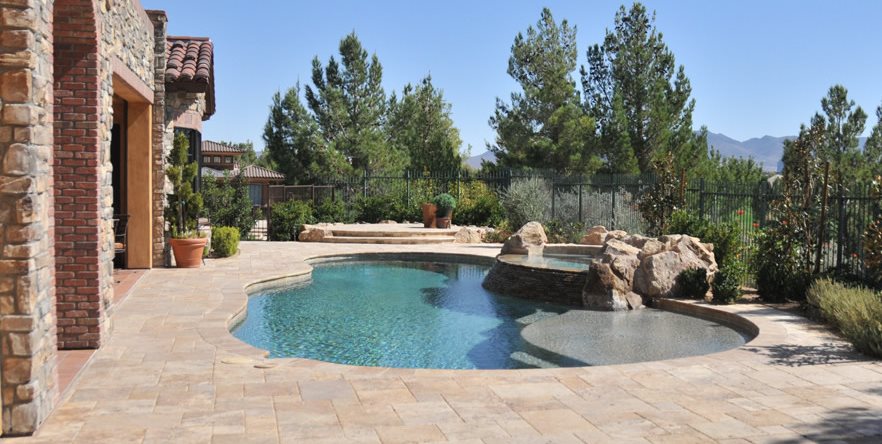
Chip-N-Dales Landscaping in Las Vegas, NV
-

Arcadia Design Group in Centennial, CO
-
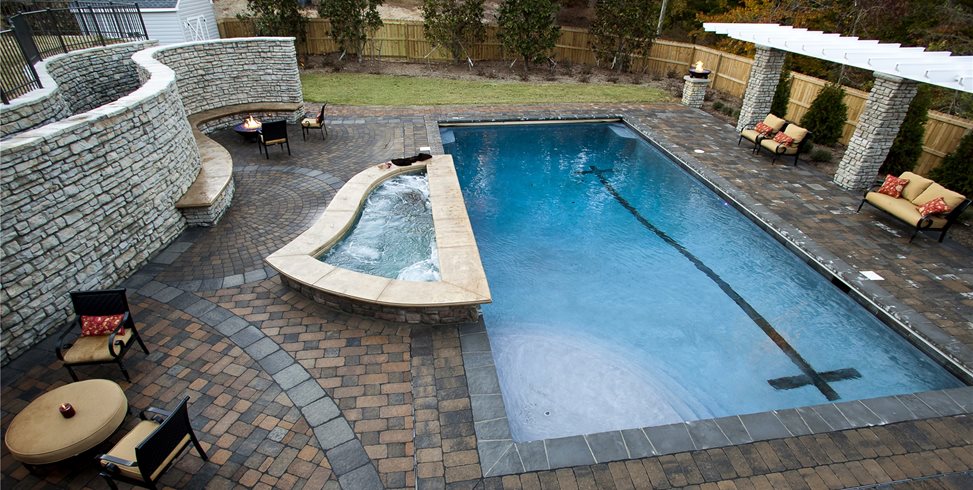
Mid Atlantic Enterprise Inc in Williamsburg, VA
-
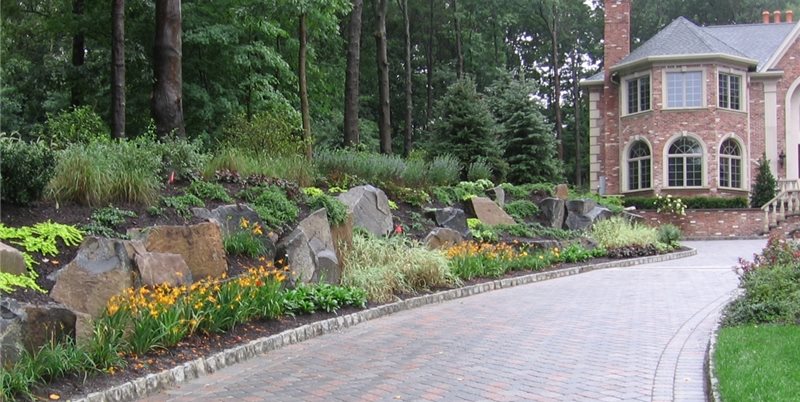
Cipriano Landscape Design in Carrollton, TX
-
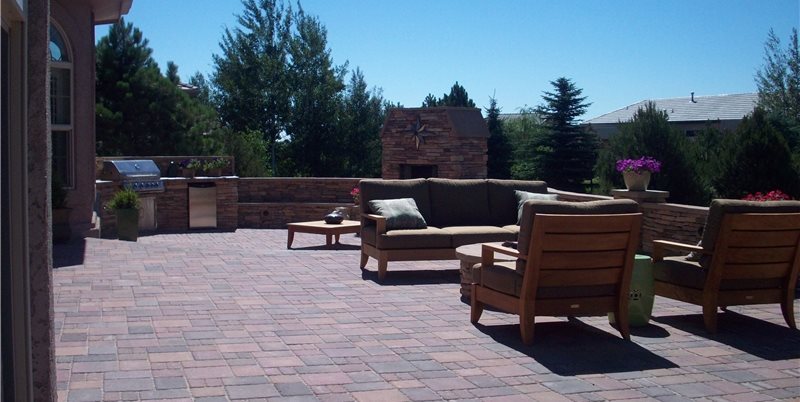
Green Scapes Landscaping in Colorado Springs, CO
-

Lisa Cox Landscape Design in Solvang, CA
Concrete Pavers & Travertine Coping
Time / 01:36
Contemporary landscapes have become a showcase of manufactured paving stones valued for their low cost and long term durability. They originated in Europe after the war when an affordable unit paver was needed to rebuild streets that would hold up far longer than poured concrete or asphalt. While brick was well established, this clay based product was not as easy to manufacture and while it remains part of this materials group, the majority of these products are primarily concrete based.
The beauty of precast paving stones is that they can stand alone on a sand or gravel base without mortar. They are small enough to be moved and hand set without special equipment. Some designs are ideal for permeable paving that complies with the zero runoff building codes.
In the urban environment, precast paving stones can be taken up to make subgrade repairs of streets and sidewalks, then replaced without the added cost of new paving materials. Solid paving as every American knows, becomes a nightmare when repairs are required due to extensive demolition required to remove original street surface. This combined with the machinery and forming necessary before new concrete or asphalt can be laid makes pavers a much more affordable and sustainable choice for both urban streets and residential yards
Precast paving stones caught on in landscapes early on due to affordability and versatility. The majority of these fall into one or more categories:
Interlocking pavers:
These manufactured paving stones can be obtained in a wide range of shapes and colors coordinated to produce a paving pattern once installed. Such patterns are so visually appealing they may be preferred over more expensive stone and tile.
Precast unit pavers:
Ordinary precast pavers produce a surface with crisp, uniformly shaped units such as squares or brick-like rectangles in various sizes.
Tumbled precast unit pavers:
Precast unit pavers are tumbled at the factory to produce a more natural looking surface. Tumbled pavers can suggest a more aged appearance that more accurately mimics the look of hewn stone. Tumbled pavers also offer a softer edge that may prove safer in high activity areas such as swimming pool decks and adjacent to sports courts.
Open Cell pavers:
These are specially made unit pavers designed to allow water to drain through openings in the paver itself, or through those set into the edges that result in increased flow through the joints. While designed to increase permeability in parking lots, they are equally valuable for zero runoff homesite paving.
Turf pavers:
This unique precast paver was developed to allow emergency equipment to drive over lawn, typically to provide fire lanes to multifamily housing without paving the entire surface. They are also used for overflow parking. Turf pavers are often cast in a lattice texture that provides openings large enough for turf to grow throughout.
Stone pavers:
These are remnants of pre-war pavements created out of rough hewn stone squares that once replaced cobblestones. While approximately the same size as precast concrete units, they are vastly more expensive due to the labor required to render stone into identical units.

 Backyards
Backyards
 Front Yards
Front Yards













